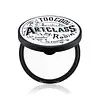Hourglass Cosmetics Vanish Airbrush Pressed Powder Versus Too Cool For School Artclass By Rodin Finish Setting Pact
What's inside
What's inside
 Key Ingredients
Key Ingredients

 Benefits
Benefits

 Concerns
Concerns

 Ingredients Side-by-side
Ingredients Side-by-side

Mica
Cosmetic ColorantMagnesium Dna
Skin ConditioningPotassium PCA
HumectantSilicon
AbrasiveSodium Fluoride
Potassium Hydroxide
BufferingTin Oxide
AbrasiveSynthetic Fluorphlogopite
Silica
AbrasivePhenyl Trimethicone
Skin ConditioningBoron Nitride
AbsorbentCI 77220
Cosmetic ColorantMagnesium Myristate
Pentaerythrityl Tetraethylhexanoate
EmollientTriethoxycaprylylsilane
Caprylyl Glycol
EmollientDimethicone
EmollientEthylhexylglycerin
Skin ConditioningHydrogen Dimethicone
Aluminum Dimyristate
Emulsion StabilisingAllantoin
Skin ConditioningIsopropyl Titanium Triisostearate
EmollientIsostearic Acid
CleansingTocopherol
AntioxidantCI 77007
Cosmetic ColorantCI 77491
Cosmetic ColorantCI 77492
Cosmetic ColorantCI 77499
Cosmetic ColorantMica, Magnesium Dna, Potassium PCA, Silicon, Sodium Fluoride, Potassium Hydroxide, Tin Oxide, Synthetic Fluorphlogopite, Silica, Phenyl Trimethicone, Boron Nitride, CI 77220, Magnesium Myristate, Pentaerythrityl Tetraethylhexanoate, Triethoxycaprylylsilane, Caprylyl Glycol, Dimethicone, Ethylhexylglycerin, Hydrogen Dimethicone, Aluminum Dimyristate, Allantoin, Isopropyl Titanium Triisostearate, Isostearic Acid, Tocopherol, CI 77007, CI 77491, CI 77492, CI 77499
Ingredients Explained
These ingredients are found in both products.
Ingredients higher up in an ingredient list are typically present in a larger amount.
Ethylhexylglycerin (we can't pronounce this either) is commonly used as a preservative and skin softener. It is derived from glyceryl.
You might see Ethylhexylglycerin often paired with other preservatives such as phenoxyethanol. Ethylhexylglycerin has been found to increase the effectiveness of these other preservatives.
Hydrogen Dimethicone is a type of silicone.
Mica is a naturally occurring mineral used to add shimmer and color in cosmetics. It can also help improve the texture of a product or give it an opaque, white/silver color.
Serecite is the name for very fine but ragged grains of mica.
This ingredient is often coated with metal oxides like titanium dioxide. Trace amounts of heavy metals may be found in mica, but these metals are not harmful in our personal products.
Mica has been used since prehistoric times throughout the world. Ancient Egyptian, Indian, Greek, Roman, Aztec, and Chinese civilizations have used mica.
Learn more about MicaSilica, also known as silicon dioxide, is a naturally occurring mineral. It is used as a fine, spherical, and porous powder in cosmetics.
Though it has exfoliant properties, the function of silica varies depending on the product.
The unique structure of silica enhances the spreadability and adds smoothness, making it a great texture enhancer.
It is also used as an active carrier, emulsifier, and mattifier due to its ability to absorb excess oil.
In some products, tiny microneedles called spicules are made from silica or hydrolyzed sponge. When you rub them in, they lightly polish away dead skin layers and enhance the penetration of active ingredients.
Learn more about SilicaSynthetic Fluorphlogopite is the synthethic version of mica. It consists of fluorine, aluminum and silicate.
Synthetic Fluorphlogopite is used to add volume to products.
It is considered non-irritating on the skin.
Learn more about Synthetic FluorphlogopiteTin Oxide is an inorganic oxide used to add opacity and volume to a product. In nature, it is already found in mineral form. The main ore of tin is an opaque and shiny mineral called casseterite.
Tin Oxide helps remove translucency in a product, or make it more opaque. Besides adding opacity, tin oxide is used for bulking to add volume.